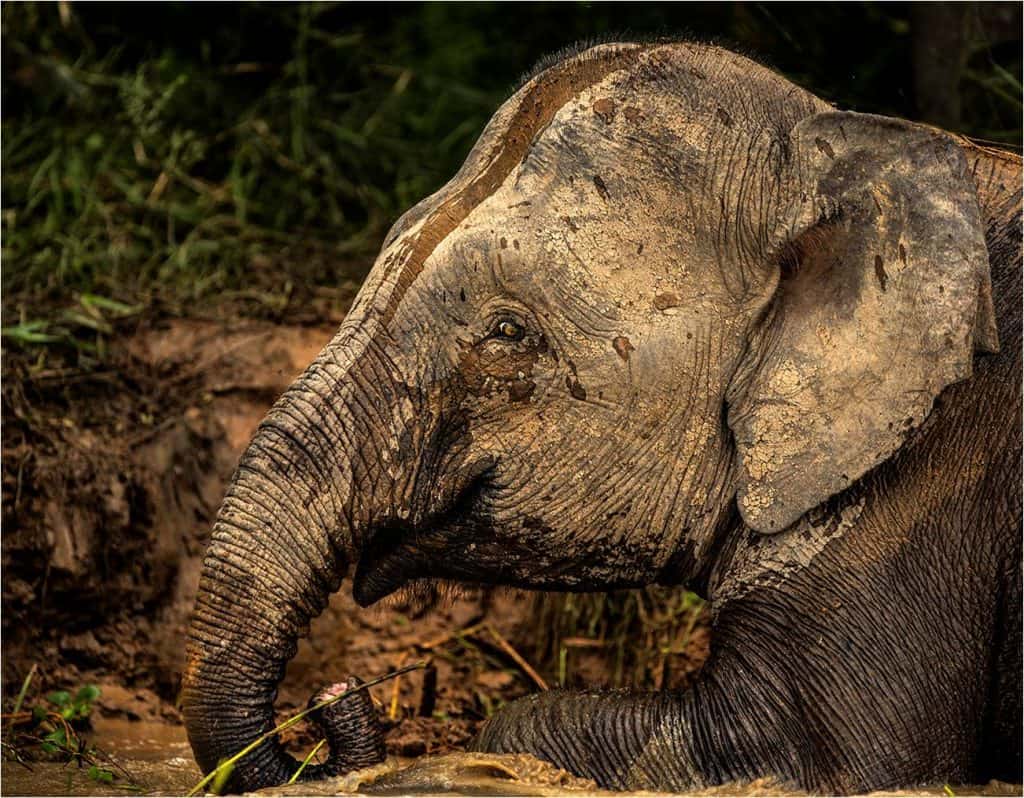When Europeans first set foot on Borneo, the third largest island in the world, they were amazed to find large populations of elephants in the deep jungles of the oldest rain forests in the world. Not only were these newly discovered elephants smaller than the Asian elephant, but also looked and behaved differently.
The diversity and abundance of plants and animals on Borneo caught the attention of scientists. Many new plant and animal species were discovered, and the elephants immediately became controversial. Some scientists believed these elephants to be a different species, while other scientists believed that they somehow arrived here from mainland Asia and are only a variety of the Asian elephant.

The distribution of the elephants on Borneo was probably the most interesting of the unexplained new information regarding these elephants. The elephants were only found in the forests of the north-eastern corner of Borneo. Tropical rain forests cover most of the island, and there is no ecological explanation for the elephants not to occur in the rest of Borneo. It seems as if somebody offloaded them a few hundred years ago and left them to disperse to the rest of the island. Provided time, they would have inhibited the remaining portion of Borneo as well. The only problem at the time was that no boat was nearly large enough to transport elephants.
After the first Europeans arrived, hunting and deforestation resulted in the drastic decline of elephant numbers. When these special little elephant’s numbers dropped below 2000, I started planning a visit to Borneo.

In April 2014 I find myself in a small boat on the Kinabatangan River looking for elephants. I was very fortunate to see many elephants in big groups coming down to the river to play, bath and eat for hours.
The initial, but remarkable behaviour was their total lack of fear for humans. We managed to steer the boat right up to them. At close distances, the differences between these elephants and their Asian cousins can be seen. They are about 70% smaller than the Asian elephant, with a long tail hanging down to the ground and a relative short trunk. Their faces are baby like and give them a cute appearance. There is no doubt that these elephants belong to a different species or sub species. Their limited distribution on north-eastern Borneo and total lack of elephant fossils on Borneo strongly suggested that these elephants came from another place. One possibility was elephants from nearby Sumatra, but the Sumatra elephant have larger ears and an extra pair of ribs. Genetic studies suggest that the Borneo elephants separated more than 300 000 years from the Asian and Sumatra elephants.
Two unanswered questions remain: Where did these elephants come from and how were they transported?

If you look at the history of Mongalia and Java, the most logical explanation is that Java elephants were sent to the Sultan of Sulu byWikramawardhana, who ruled the Majapahit kingdom from 1389 to 1429. The elephants were probably transported on a Chinese ship and arrived in Jolo, the capital of the Sulu islands, in 1935. Some of these elephants became feral on Sulu Island soon after their arrival. The Sultan of Sulu was afraid that his rivals would use the elephants to make war against him and he then transported some of the elephants to Sandakan on the island of Borneo and let them free in the forest.
On the island Java the last Java elephants were hunted down and they became extinct in the 18th century.
On the Island of Sulu the Java elephants did not do any better. In 1814 John Hunt reported feral elephants on Sulu. He also reported that the local farmers organized grand hunting matches after the crops were collected. This was just another name for indiscriminate slaughter of elephants. The Sulu farmers succeeded in exterminating al the elephants on Sulu. In 1838 there were no elephants left on Sulu Island.

Elephas maximus sondaicus became extinct on its native Island of Java. Because of extraordinary circumstances the Java elephants got a second chance on Sulu Island. However, they also became extinct on Sulu island. In North-eastern Borneo, a viable population of Java elephants exist today. About 1200 elephants still exist in spite of an ever-expanding human population. In last 3 generations their numbers declined more than 50%. The Borneo pygmy elephants face a third extinction!
Only 3% of the Borneo rainforest is left. Over population, deforestation and total disrespect for nature threatens nearly all aspects of Borneo’s wildlife. The rhinos are practically extinct with possibly one male and one female left. The sun bear and proboscis monkeys are critically endangered species. The Pigmy elephants are critically endangered and hopefully they will be properly protected in future because they will not get a third chance

